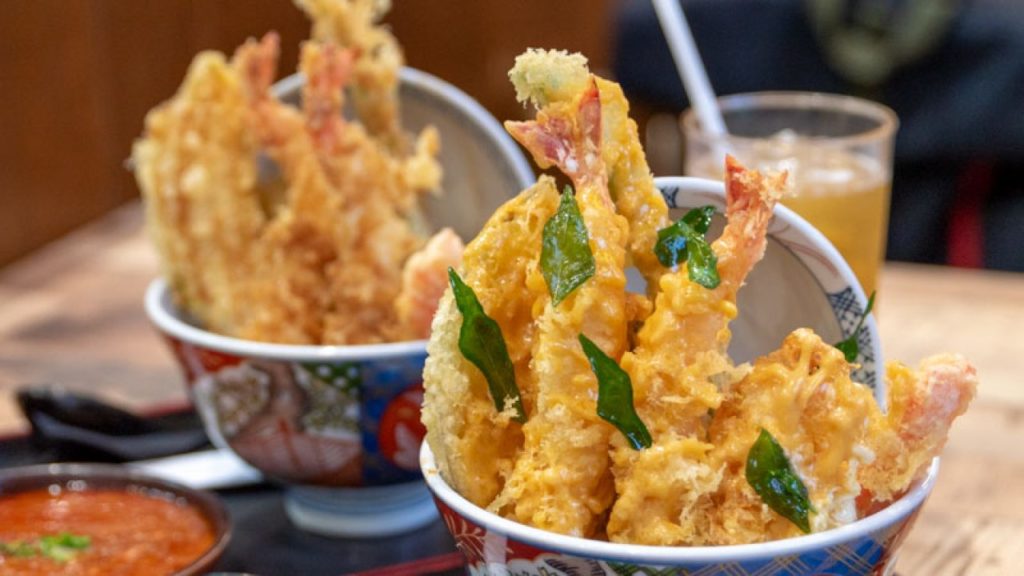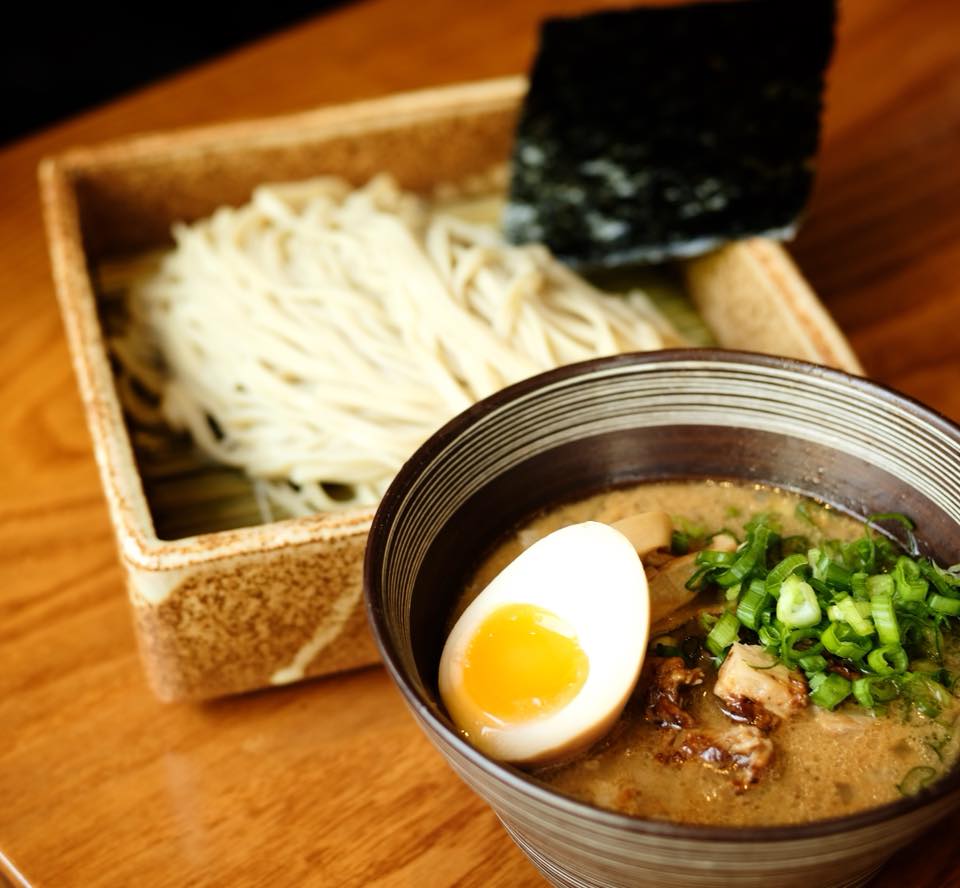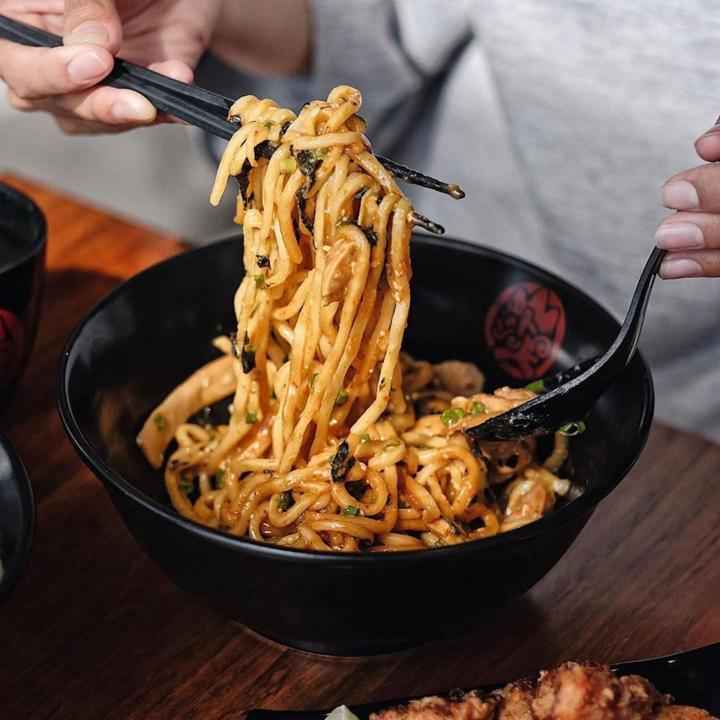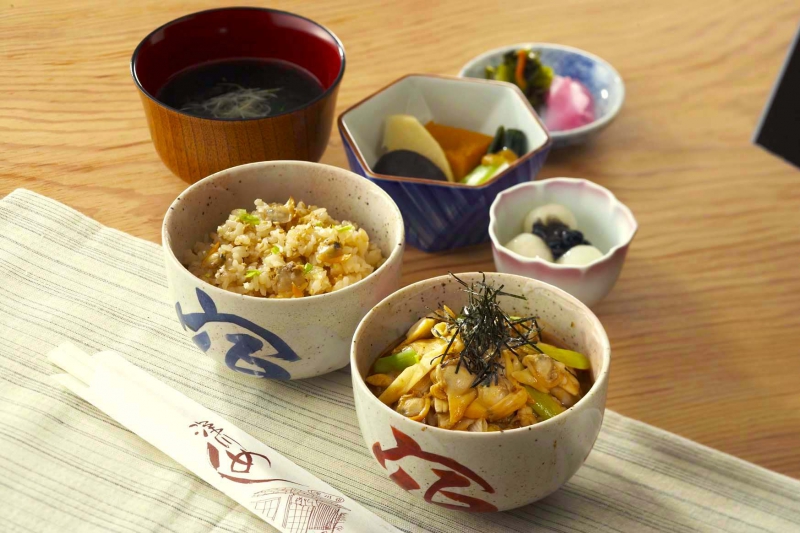Tendon

The clue is in the name, a portmanteau of ‘tempura’ and ‘donburi’. Tendon is therefore a bowl of white rice topped with deep-fried seafood and vegetables. Today, tempura has evolved into a cuisine in its own right, with some specialist restaurants charging tens of thousands of yen for an elaborate set menu, yet tendon remains a humble, affordable dish loved by the masses. Made with fresh seafood that’s fried in sesame oil (usually) until golden and crispy, tendon is a go-to fast-food when you need something filling and satisfying.
Tsukemen

Tsukemen means ‘dipping noodles’ in Japanese. The noodles and broth of this ramen are served in separate bowls and you simply dip the former into the latter and happily slurp away. It was invented in Tokyo back in the early ’60s by chef Kazuo Yamagishi; other tsukemen restaurants soon sprung up and the variety grew. Today, you can also find dipping udon and soba. Tsukemen noodles tend to be on the thicker side while the broth is a lot more concentrated in flavour and not as diluted as the typical ramen broth.
Abura soba

Literally meaning ‘oil noodles’ (don’t worry – they’re less greasy than you might expect), this dish was born around Musashino in western Tokyo. Both noodle joints Chinchintei and Sankou claim to be the originator of this mix of soupless noodles, toppings and vinegar – they both started selling it over half a century ago. Since the dish contains little to no oil, it seems strange that the name has stuck. Some say it’s to differentiate it from tsukemen, some say it’s because there’s some oil in the sauce, but we like the explanation that you’re ‘coating’ the noodles with sauce as you eat.
Monjayaki

A type of pan-fried batter or savoury pancake, monjayaki is Tokyo’s answer to okonomiyaki, the iconic dish of Hiroshima and Osaka. Monjayaki retains a slightly runny appearance much like melted cheese even when cooked – but the delicious concoction tastes better than it looks. The origins of monja, as it’s affectionately called in Tokyo, can be traced back to a crêpe-like confection known as mojiyaki in the late Edo period. A popularity boom in the 1980s later led to the birth of Monja Street on Nishinakadori in Tsukishima – you’ll find about 75 monja restaurants here today.
Fukagawa-meshi

A small fishing town in Eastern Tokyo, Fukagawa flourished in the Edo period (1603-1868), thanks largely to the abundance of high quality asari (short-neck clams) and oysters found in local waters. Back then, the fisherman staple was bukkake-meshi, a broth of clams, green onions and tofu poured over cold rice. As clams were cheap and widely available, this humble dish became popular in the homes of Fukagawa – hence Fukagawa-meshi, meaning the rice meal of Fukagawa. While purists argue that authentic Fukagawa-meshi refers to rice with broth, the term now generally refers to rice cooked with clams.